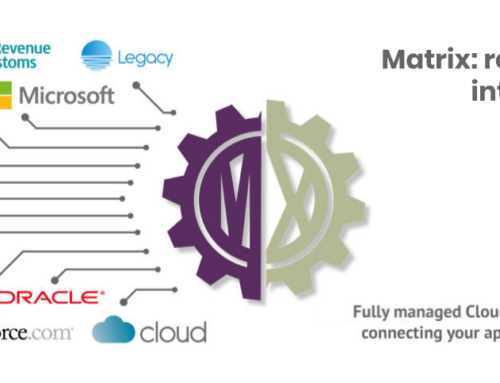Mandant’s Coupa ERP Accelerator – short and long term cost benefits
Delivering new systems and functionality requires significant investment. The upfront capital expenditure can seem eye-watering enough. Unexpected costs that surface as the programme rolls out can mean that contingency budgets are blown early. This could leave project accountants floundering as the costs spiral out of control.
Planned spend usually covers the cost of the new software, infrastructure, training, change management and delivery. But costs can escalate for a whole range of reasons. The scope may change and creep and analysts may find unexpected anomalies in the current landscape. The team could be left short on the required skills at the right time.
Good programme management will help to prevent unexpected budget overruns. Managers can keep expenditure down by focusing on replanning based on emerging issues. However, there may be expensive costs built in if basic risks are not addressed.
The integration phase of any ERP implementation is potentially quite complex. The design and delivery of integration solutions, therefore, requires careful analysis and planning. The joins between an ERP like Coupa and existing customer applications are usually the trickiest part of any design. The shape of the data in the end-point applications will be subtly different. It needs to be analysed and understood if costly redesigns and delays are to be avoided. Sadly, this phase is not always given the attention it needs.
There can be a number of reasons why integration between Coupa and the existing landscape may be more complex, (and consequently more costly) than it needs to be. For example there may be limitations in the functionality of the existing system(s) and skill gaps in the IT team. Systems documentation is often missing and, in addition, the IT team may not be familiar with Coupa’s integration capabilities.
When designing integration solutions from scratch the cost of analysis, design, mobilisation and enablement phases need to be built into the budget. These activities often occur in parallel to the core implementation and can cause costly delays if they are not executed in time. Poorly understood dependencies pose a further risk to programme cost assumptions. If it emerges that integration requirements have not been fully understood, additional resources may be needed to fix problems. You may also have to urgently procure new middleware to build the solution. All this will impact the benefit case.
The integration element of the Coupa implementation need not present a significant project risk. It certainly shouldn’t have a major impact on overall project timelines or introduce significant extra costs if planned well. Building the integration design into the architecture from the start saves time, effort and costly delays. Ensuring you are using the most efficient approach to delivering the integration solution will save pain later.
The challenges of building your own integration solution – and how to approach them
It may feel daunting, but it helps to understand your integration challenges and use tried-and-tested approaches to overcome them.
Integration challenges include:
Understanding the complexity of data
Linking sets of data together through integration can, in principle, seem reasonably easy. If one data set has an item, e.g. ‘Material/Item’ it might seem simple to replicate this in the new data feed and transfer it to the other data set.
However, successful integration is not just about translating and moving similar-looking data around between systems. True integration needs to enable business processes to flow seamlessly across multiple systems providing the right data to systems at the time they need it. Orchestrating sets of master and transactional data requires an understanding of the data to be exchanged, how different conditions determine the shape and format and how it may need to be manipulated.
Business processes need the right data at the right time. Investment of time and effort in data analysis, familiarisation, and process prototyping saves pain later.
Underestimating the complexity of the landscape
Understanding the as-is and to-be systems landscapes can be a demanding task. Some requirements may seem straightforward. However, they can change as business processes evolve or new parts of the business are onboarded. What works today may not work tomorrow unless the design is flexible. The ability to adapt needs to be built in.
For example
An organisation starts by maintaining invoices solely in their ERP and replicating them in Coupa. As business processes evolve they may want to maintain some invoices in the ERP and others in Coupa. This fundamental change in process needs to be anticipated in the integration design from day one so that adaptations can be managed with minimum intervention.
What should drive the design is an understanding of the landscape the data will pass through and where it should land. The integration process needs to recognise when significant data events have occurred and how to respond. The solution needs to notify interested parties (systems) and recognise events as they happen in real-time. The process needs to be able to spot which operations – e.g. create/update/delete requests – are allowed under specific conditions as part of the overall cross-system business process.
To do this properly needs time and effort. There will always be short-cuts, unofficial data extracts, summary information and, potentially, duplicated interfaces. Short-term priorities and project pressures often demand quick fixes but this usually has an impact on the quality of the solution. Finding all these issues and understanding the significance, risk and preferred sequencing takes effort particularly when implementing new capabilities.
Prioritise – There is almost always an optimum sequence for integration build. Recognising that and being clear on what can be left on the to-do list for later can lead to time gains/cost reductions.
Concentrating on the technical solutions and ignoring the business aims
Technical expertise is essential but your integration specialists also need to be clear on the overall aims the organisation is trying to achieve. Without an understanding of the context and the goals it is difficult to create a plan that will deliver the expected value at the right time.
Concentrate on the why! – Take time to really understand the business objectives and time delivery of integration modules to speed up customer’s access to live functionality
Changing goalposts/continuing evolution
Organisations constantly change and evolve. Any integration solution has to be able to evolve in parallel as new requirements and capabilities come into scope. You need to be in a position to support these requirements in a timely, cost-effective manner alongside other priorities. You need to ensure your IT function doesn’t inadvertently become a software house having to deliver expensive, time-consuming changes constantly because the initial design didn’t build flexibility in from the start.
Keep up! The integration phase needs to keep up with the pace of change, making quick deliveries and adjusting formats as the landscape moves.
Failing to communicate the goals
Those responsible for technical delivery sometimes make dangerous assumptions about the goals of a programme. Failure to understand the business expectations at either end of an integration connector can cause delays, frustrations and costs. Integration products link functions together and deliver them to live operation. Getting the timing of these deliveries wrong can prevent the business benefiting from the applications they need.
Two-way communication between the business owners and the technical team is the only way to ensure that the business goals are met.
For example
An assumption might drive a decision to build a fire and forget, asynchronous solution to save time and money. If it becomes clear later that the business actually requires the end to end visibility of a synchronous solution this will involve a costly change later on. The assumption has moved the cost to a later stage and probably increased it.
Don’t focus on the technical aspects alone. Ensure you communicate the design and business implications to all stakeholders at all levels, adapting and refining the message all the time. It might seem blatantly obvious, but the best solutions meet the business requirements. Try not to compromise on business benefit if you are challenged by technical limitations of the proposed solutions.
Bugs! – not just obvious coding errors
Integration software suffers from the same problems as all other technical products, but we assume that the development and testing cycle will identify the bugs. When integrating systems you are, by definition, dealing with multiple applications. You might find that the systems and the integration software work perfectly in isolation but the process design doesn’t. In this context the phrase ‘implementation bugs’ means something far more significant than bad coding.
Bad process design can cause problems that either surface immediately – and sometimes dramatically – or they may sit waiting for the worst time to make their presence felt. Bugs, bad code or bad design can cause your business to slow down or stop. They can damage your brand and make relationships with customers and suppliers fraught.
Avoid the pain of bugs and process design errors altogether by using a proven pre-built solution. Benefit from someone else doing the design, prototyping and development – and encountering and resolving the “gotchas”.
Integration is complex, experts make it easier – particularly when they’ve done it before, multiple times
Integration is the art of connecting well-structured, up-to-date functionality with landscapes that have evolved over time. It helps to have a structured, tested and well maintained integration solution to offer clients with complex systems environments.
Simplification of the systems spaghetti can help with ongoing costs too. Reducing the time and effort needed to support flaky connections ensures teams are focused on improvements not triage. Robust integration solutions reduce the risk of security breaches and ensure maintenance and upgrade tasks are easy and safe.
ERP implementations run smoother with Mandant. MATRIX enables fast deployment of Coupa modules which deliver business benefit direct to the organisation’s bottom line.
While implementation programmes are running, the business is rarely standing still. Changes to the underlying organisation, market trends and other infrastructure and IT landscape don’t stop because an ERP deployment is underway. Delivering change at speed, following business processes and requirements keeps the programme ahead of the change curve and minimise any retro-fitting to the planned delivery phases.
Benefit from tried and tested implementation processes with experts who can keep up with the pace of ongoing change.
Savings using MATRIX
What does this mean for your costs – the obvious and the hidden? Mandant have a good grasp of the cost areas that need to be taken into account when implementing technical solutions. They design solutions to minimise:
- Implementation costs
- Recruitment and ongoing support costs
- Lifetime solution costs
Mandant have analysed the savings clients can expect by using MATRIX to accelerate their Coupa implementation programmes, reducing costs now and in the future.
A breakdown of all the stages involved in delivering integration solutions for Coupa implementations demonstrates an overall 83% saving of time and effort using MATRIX compared to build-your-own with integration software.
What does this mean for your Coupa project?
Using MATRIX can save a huge amount of time and effort at each stage of the integration phase.
Don’t forget the lifetime cost savings
IT resources represent a significant investment because they are vital to your organisation’s ongoing operation and future landscape. If they are tied up trying to deliver integration solutions from scratch they aren’t focusing on delivering your IT strategy. It pays to ensure they are free to deliver the services that matter to your operation rather than being distracted by time-consuming transformation activity.
MATRIX Cost Model
Pay only for what you use
Whether it is Purchase to Pay, OK to Pay or other vital scenarios, Mandant believe you should see value from your investment as fast as possible. With their business process focused modular approach to delivery you only pay for what you use.
Bespoke code
Where requirements are more complex, Mandant can turn around new bespoke solutions within days. These are fully tested and deployable. Saving time and effort on emerging requirements during an implementation is invaluable. Many ERP delivery projects go expensively astray during the integration phase. Saving time, effort and money at this stage delivers exponential benefits during the implementation programme and for years afterwards.
Lifetime cost benefits – delivering over years
Once your new ERP system and integration solutions are live you still reap the benefits. Mandant cover all upgrade and retesting costs. Your subscription covers all maintenance and support activity.
Implementing MATRIX and other Mandant solutions is cost effective during implementation and continues to deliver value as your relationship matures. Ensuring continuous availability of the supporting integration network gives IT teams and the business peace of mind.
If support issues arise it is good to be confident that they will be fixed as soon as possible. Mandant’s MATRIX and other solutions are built to be informative. Messaging on all activity is detailed, clear and delivered direct to systems monitoring so IT teams are able to deploy fixes quickly and efficiently. Data transfers follow industry standards so failing transmissions can be replayed without risk of data corruption.
No cost surprises
Working with Mandant and signing up for their solutions, whether for Coupa ERP Acceleration, SAP integration or any other connectivity programme means there are no surprises on costs. You get a clear view of the up-front spend as well as ongoing maintenance and upgrades. The Coupa ERP Accelerator modules are built into a fast to deliver, robust and secure subscription package. All costs are clear. Why not find out how Mandant’s ERP Accelerator can save you money at implementation stage and for years to come.
Summary – Why Mandant and MATRIX are the cost effective choice
- Mandant have 25 years of experience delivering integration for ERP and other software implementations. They are a safe pair of hands and are Coupa and SAP trusted partners. Their ERP Accelerator engine, MATRIX, is a fast, secure and cost effective mechanism for delivering Coupa quality and functionality fast.
- Mandant know that clear goals and objectives are essential at the planning stage and that they need to be kept in mind during the delivery phase. They know they always need to be ahead of any changes of direction or unexpected issues.
- It pays to have experts setting the integration budget. Mandant have a deep understanding of hidden costs and risks as well as known planned spend. They know how to ensure integration-related spend is never wasted.
- Partnership with ERP systems providers ensures clear direction and a deep understanding of the underlying technology. Mandant are always up to date and able to maximise the impact of new tools.
- Testing is central to Mandant’s approach. Their quality assurance process means you can trust their solutions. Detailed testing processes and plans ensure that solutions continue to be robust and error-free long after go-live.
- Mandant provide the right skills at the right time. Their people are highly experienced and every day they spend with you delivers value. The team is sized for the job.
- Current and new clients benefit from Mandant’s approach to maintaining the platform. Their arms are around every client to ensure the applications evolve over time, are tested and upgraded without impact to the client.
- Mandant are known for their technical expertise and insight. They deliver solutions to major challenges fast and securely.
- Mandant understand the importance of change management and communication. They get to the heart of the matter and make sure they take everyone with them.
Talk to us today to find out how we can deliver trusted integration solutions for a fraction of the cost of building it yourself.
Contact us
To find out how we can help you deliver and manage effective, robust and accurate data to your systems.
Mandant have 25 years’ experience of delivering integration solutions to satisfied clients. Find out today how they can help you manage difficult change.
Find out more about how Mandant can solve your integration challenges and help accelerate your Coupa, SAP ERP or other integration project. Visit www.mandant.net or email info@mandant.net
Mandant’s ERP accelerator for Coupa, MATRIX, is listed on the Coupa App Marketplace
Share on LinkedIn









